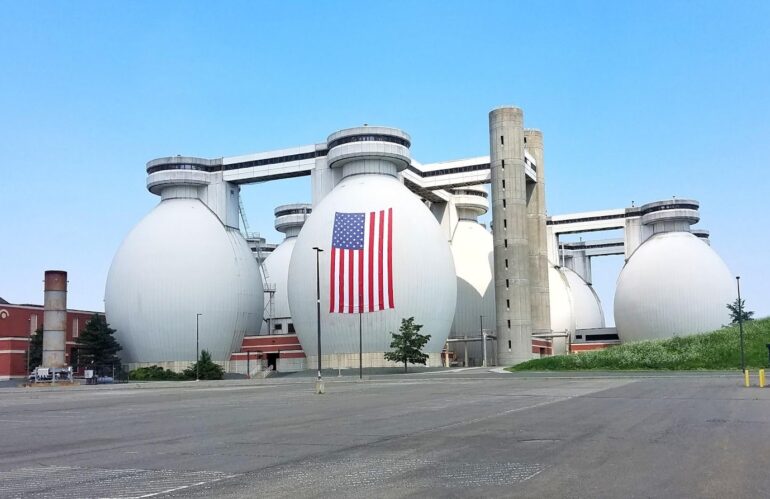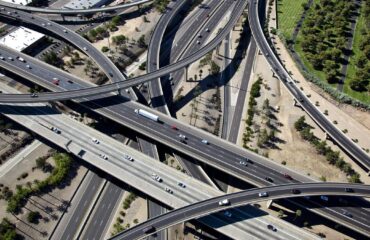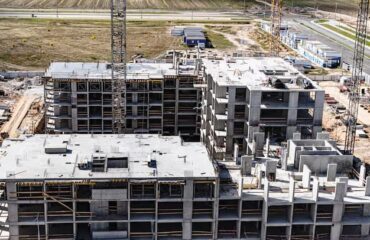From the simple act of drinking tap water to the intricate management of wastewater, these systems are the lifeblood of our society. However, beneath the surface of convenience lies a looming crisis of neglect and underinvestment. As the nation grapples with aging infrastructure and growing demands, the need for immediate action to safeguard our water resources has never been more pressing.
Drinking Water

Amidst the convenience of turning on a tap lies a stark reality: America’s drinking water infrastructure is aging and underfunded. With approximately 151,000 public water systems across the nation, it’s alarming to note that some still rely on infrastructure dating back to the Civil War era. According to the U.S. Environmental Protection Agency (EPA), an estimated investment of $472.6 billion over the next two decades is required to ensure the continued safety and adequacy of our drinking water supply:
- The consequences of neglecting this essential infrastructure are dire. Without proper investment, there’s a risk of contamination and deterioration, posing significant threats to public health and safety. As Benjamin Franklin famously said, “An ounce of prevention is worth a pound of cure.” The need for proactive measures to address the challenges facing our drinking water systems has never been clearer;
- It’s not just about ensuring access to clean water for drinking and basic hygiene. A reliable drinking water infrastructure is fundamental to the functioning of our society and economy. Businesses, industries, and households alike depend on a consistent and safe water supply for daily operations and economic activities. Failure to address the investment gap in drinking water infrastructure could have far-reaching consequences, not only in terms of public health but also in terms of economic productivity and social well-being.
The urgency of this issue cannot be overstated. Every day that passes without adequate investment puts our communities at greater risk. As stewards of our nation’s resources and guardians of public health, it’s imperative that we prioritize the revitalization and modernization of our drinking water infrastructure. By doing so, we can ensure that every American has access to the safe, clean drinking water they deserve, now and in the future.
Levees, Dams, Waterways

While often unseen, America’s levees, dams, and waterways play a critical role in supporting our economy and protecting our communities. With over 25,000 miles of inland waterways and more than 90,000 dams scattered across the nation, these infrastructural marvels facilitate commerce, provide recreational opportunities, and mitigate flood risks:
- However, beneath their surface lies a story of neglect and deterioration. The average age of dams in the United States is 56 years old, and as they age, the risk of failure increases. Despite the importance of these structures, nearly one-third of the nation’s dams are rated as “high” or “significant” hazard, according to the U.S. Army Corps of Engineers. Without proper maintenance and investment, these aging structures pose a grave risk to the safety and well-being of communities downstream;
- Hurricanes Katrina and Rita serve as stark reminders of the consequences of failing to invest in levees and dams capable of withstanding extreme weather events. The devastation wrought by these disasters could have been mitigated with proactive investment in resilient infrastructure. Yet, as the impacts of climate change intensify, the need for such investments becomes even more urgent;
- Moreover, America’s inland waterways are the arteries of our nation’s economy, facilitating the movement of over 600 million tons of freight annually. However, aging locks and deteriorating infrastructure threaten to impede this vital flow of commerce. Without strategic investment, we risk stifling economic growth and competitiveness on a global scale.
The economic benefits of investing in these critical infrastructure systems are clear. Not only would such investments create jobs and stimulate economic activity, but they would also safeguard lives and livelihoods. By prioritizing the modernization and maintenance of our levees, dams, and waterways, we can build a more resilient and prosperous future for generations to come.
Waste Water

Hidden beneath the surface, America’s wastewater infrastructure quietly performs the vital task of treating and managing the water we use daily. With over 14,748 wastewater treatment facilities nationwide, this network is the unsung hero of public health and environmental protection. However, despite its critical role, this infrastructure is facing significant challenges due to aging and underinvestment:
- Demand on wastewater treatment plants is projected to grow by more than 23% by 2032, placing increasing strain on already overburdened systems. The capital investment needs for the nation’s wastewater and stormwater systems are estimated to total a staggering $271 billion over the next two decades. Yet, much of this infrastructure remains out of sight and out of mind for the average American;
- The consequences of neglecting wastewater infrastructure are severe. As systems deteriorate, the risk of contamination and pollution of our waterways increases, jeopardizing public health and the environment. Inadequate treatment capacity can lead to sewage overflows and backups, posing health risks and degrading water quality;
- Moreover, the economic toll of failing wastewater infrastructure is substantial. A one-day disruption in water service could cost the economy $43.5 billion in sales and $22.5 billion in GDP. The long-term impacts of inadequate investment in wastewater infrastructure could have far-reaching consequences, affecting not only our economy but also our quality of life and the health of our ecosystems.
Investing in the modernization and expansion of wastewater infrastructure is not just a matter of necessity; it’s an investment in the health and well-being of our communities and the sustainability of our environment. By prioritizing the revitalization of these essential systems, we can ensure that every American has access to clean, safe water and protect the health of our waterways for generations to come.
Economic Impact
The state of America’s water infrastructure not only affects public health and safety but also has profound economic implications. The recent national report, “The Economic Benefits of Investing in Water Infrastructure,” underscores the significant economic benefits that would result from closing the investment gap in water infrastructure:
- The report estimates that bridging this gap would unleash an annual economic activity of $220 billion and create 1.3 million jobs. This injection of economic stimulus would not only bolster employment but also stimulate growth across various sectors of the economy. From construction and engineering to manufacturing and service industries, the ripple effects of such investments would be felt far and wide;
- Moreover, investing in water infrastructure is not just about short-term economic gains; it’s also about securing long-term prosperity. A reliable water infrastructure is essential for supporting economic activities ranging from agriculture and manufacturing to tourism and recreation. Businesses rely on a consistent and safe water supply for operations, while communities depend on clean water for health and well-being;
- Conversely, the costs of neglecting water infrastructure are substantial. A single day of water service disruption could result in billions of dollars in lost sales and GDP. Prolonged neglect could lead to more significant economic downturns, as seen in regions grappling with water crises due to aging infrastructure or contamination.
In essence, investing in water infrastructure is not just a matter of addressing a pressing need; it’s an opportunity to unlock economic potential and ensure long-term prosperity. By prioritizing these investments, we can create jobs, stimulate economic activity, and build a foundation for sustainable growth and resilience. The time to act is now to reap the economic benefits and safeguard the future of our economy and communities.
Future Imperatives

As the United States navigates the complexities of the 21st century, addressing the looming crisis of neglected water infrastructure emerges as a paramount imperative for safeguarding public health, economic vitality, and environmental sustainability:
- The imperative lies not merely in acknowledging the urgency of the situation but in taking decisive action to confront it head-on. Neglecting to invest in the modernization and maintenance of our water systems is a gamble we cannot afford to take. The consequences of inaction are multifaceted and far-reaching, affecting every facet of society;
- First and foremost, ensuring access to clean and safe water is a fundamental human right. Neglecting our water infrastructure jeopardizes this right, putting the health and well-being of millions of Americans at risk. From drinking water contamination to inadequate wastewater treatment, the consequences of failing to address these issues are dire and immediate;
- Furthermore, our economy hinges on the reliability and resilience of our water infrastructure. From supporting agricultural production to facilitating industrial processes and commerce, water is an indispensable resource. A failure to invest in water infrastructure not only undermines economic productivity but also poses a threat to national security and competitiveness;
- Additionally, the environmental implications of neglected water infrastructure cannot be overstated. Aging dams, deteriorating levees, and inadequate wastewater treatment facilities contribute to pollution, habitat degradation, and ecosystem collapse. Addressing these challenges is not only essential for protecting biodiversity and natural resources but also for mitigating the impacts of climate change and ensuring the resilience of our ecosystems.
In confronting the imperative of revitalizing our water infrastructure, proactive investment is key. By prioritizing the modernization and maintenance of our water systems, we can create jobs, stimulate economic growth, and build a more resilient and sustainable future. The time to act is now. Failure to do so risks irreparable harm to our communities, our economy, and our planet. Let us seize this opportunity to invest in a future where clean, safe water is accessible to all and where our water resources are protected for generations to come.
Conclusions
The state of America’s water infrastructure is a reflection of our commitment to the well-being of our communities and the sustainability of our nation. Neglecting these vital systems not only jeopardizes public health and safety but also undermines economic prosperity and environmental resilience.
As we confront the challenges of the 21st century, investing in the modernization and maintenance of our water infrastructure is not just a matter of necessity but a testament to our vision for a secure and prosperous future. It is time to prioritize the revitalization of our water systems and ensure that every American has access to clean, safe, and reliable water for generations to come.






